Not only is China's navy the world's largest, its numerical advantage over the US is growing, and the US Navy secretary recently warned that US shipyards cannot catch up. Some experts estimate that China could build three warships in the time it takes the US to build one.
Along with China's activities in the waters off Taiwan, this was one of the concerns weighing on Defense Secretary Lloyd Austin's shoulders as he met with senior military members in the region at the Shangri-La Dialogue in Singapore.
But before the summit began, some experts analyzed that a possible solution to one of the thorny problems facing the United States—the numerical advantage of China's naval fleet—could be within reach, if only the United States could think more broadly.
According to these experts, Washington holds an element that the Beijing government does not have: allies in South Korea and Japan, which are currently producing warships with the highest specifications and lowest prices in the world.
These experts also said that buying warships from these countries, or producing US-designed warships in their shipyards, would be an effective way to help narrow the gap with China.
Blake Herzinger, a research fellow at the American Institute in Australia, asserted that these warships “will certainly be a formidable opponent to their counterparts (from China),” and Carl Schuster, former director of operations at the US Pacific Command’s Operational Intelligence Center in Hawaii, said that Japanese warship designers “are among the best in the world.”
Both of these countries have mutual defense treaties with the US, so why hasn't the US cooperated with them to catch up with China?
The main problem is that current US law prohibits the US Navy from purchasing foreign-made warships – even from allied countries – or from building its own warships abroad for security reasons as well as the desire to protect the US shipbuilding industry.
Mr. Schuster, Mr. Herzinger and others are among a group of experts who argue that legal changes are needed to help the United States regain its advantage at sea.

Type 055. Source: Naval Technology.
China's superior Type 055 challenger
The Pentagon estimates that China’s navy currently has about 340 warships, compared to fewer than 300 for the US. The US Department of Defense believes that China’s fleet will reach 400 ships in the next two years, and the US Navy’s fleet will have to “wait” until 2045 to reach 350.
But the growing size of China’s naval fleet isn’t the only factor to watch out for. Some Chinese warships are packing far more firepower than their American counterparts.
Take China's Type 055, for example, which in the eyes of many is the world's top destroyer.
Weighing in at 12,000 to 13,000 tons, the Type 055 is larger than a conventional destroyer, roughly the same size as the US Navy's Ticonderoga-class cruisers, and packs formidable firepower.
The ship carries 112 vertical launch systems (VLS) capable of launching anti-aircraft and anti-ship missiles, compared to the 96 on the US Navy’s newest Arleigh Burke-class destroyers. It is also equipped with advanced radio systems and anti-submarine weapons.
China is mass-producing these warships. It began production of the Type 055s in 2014, and recently began production of the eighth, the Xianyang. Progress on the US Zumwalt-class destroyers has been much slower, with construction beginning five years earlier, but only two have been commissioned so far.
Some Western analysts believe that the Type 055 could face a formidable opponent in the form of South Korea's Sejong the Great-class destroyer.
Weighing 10,000 to 12,000 tons, the Sejong class is smaller than China's Type 055, but carries more firepower, with 128 VLS platforms and a weapons system that includes air defense, anti-submarine and cruise missiles.
The three Sejong class ships, costing $925 million each, are the pride of the South Korean naval fleet.
“With just one ship, (the South Korean navy) can handle multiple situations at once — air defense, anti-ship, anti-submarine, land attack — and defense against ballistic missiles,” the country’s Defense Media Agency said.
Former South Korean Navy Admiral Duk-ki Kim, the first person to command a Sejong ship, believes the ship is capable of confronting China's Type 055.
“China is focusing on quantity and cost competitiveness instead of focusing on the quality of their ships,” Kim, deputy director at the Korea Military Studies Association, told CNN.

Sejong the Great. Source: DAPA.
High performance, low cost
Japan also possesses several “world-class” destroyers, according to Alessio Patalano, professor of war and strategy at King’s College London.
The country’s newest Maya-class destroyers are equipped with 96 VLSs, can launch anti-ballistic missiles as well as anti-submarine missiles, and according to Patalano, “the quality of its sensors and systems is among the most advanced in the world.” In November, the Mayas demonstrated their ability to destroy ballistic missiles in flight outside the Earth’s atmosphere.
These 96 VLS platforms put the Maya on par with the US Arleigh Burke-class ships, but the two ships have an important difference: the Arleigh Burke cost $2.2 billion, the Maya cost $1 billion less than that.
In other words, the Maya ships represented “both quality and quantity”: they were highly technical, low cost, and could be produced quickly.
“While China is demonstrating an incredible ability to mass produce ships, Japan is leading the way in terms of high-quality, low-cost products on a larger scale than most naval powers without sacrificing production speed,” said Mr. Patalano. “That balance, combined with their ship design experience, is a respectable advantage.”
And it’s not just the Maya. Consider Japan’s Mogami-class frigate: a fast, stealthy 5,500-ton warship with 16 vertical launch systems capable of launching anti-aircraft and anti-ship missiles. It’s manned by a crew of just 90 and costs $372 million per ship.
By contrast, the US Constellation-class frigates currently in development are expected to cost three times as much and require twice the crew size. This is not ideal, given the US Navy’s recruiting struggles – the US vice chief of naval operations has said it is likely to be 6,000 below its target this year – but the Constellation ships are expected to be equipped with more than twice as many VLSs as the Mogamis.
It is difficult to compare the cost of these ships with the cost of the Type 055 due to the lack of information. Estimates of the cost of these ships range from $925 million to $2.6 billion per ship.

Mogami. Source: Ministry of Defense of Japan.
Secret Weapon of the East
What makes Korean and Japanese shipyards so competitive?
Cost overruns, a common occurrence in the US defense contracting process, are not common in Japan, because unlike the US, the country requires manufacturers to stick to their initial cost estimates, according to Mr. Schuster.
“A Japanese shipyard’s bid is absolute,” Mr. Schuster said. “If they produce the finished product at a lower cost than the estimated cost, they make a higher profit. If they encounter delays or mistakes, the manufacturer has to fix it and bear the cost.”
He believes this approach is “much smarter” than the one being used in the United States, citing the problems faced by the Zumwalt-class and other littoral combat ships, which have cost the Pentagon billions of dollars to build. But critics say the Navy has no idea how to use them.
The three US Zumwalt-class destroyers cost $8 billion each, and it's unclear how they will operate with other ships in the fleet.
At the same time, several US littoral combat ships, which cost more than $350 million each, are slated to be scrapped when they are less than a third of their life spans.

Zumwalt. Source: US Navy.
Time to reconsider
Warships from Japan and South Korea are both designed to be equipped with US Aegis technology, weapons, radars and command and control systems.
Part of the reason is to help the two navies operate seamlessly with the US Navy, as they did in exercises earlier this year.
But if US, Japanese and South Korean warships use similar technology and can operate together, then why is there a law prohibiting the US from building its warships in shipyards in Japan and South Korea?
The bans are not only aimed at countering security concerns, they are also designed to protect US jobs and shipbuilding expertise.
In 2019, economic activity related to the shipbuilding industry in the United States accounted for 400,000 jobs and $42.4 billion in the country's GDP, according to data from the Maritime Administration, with 154 shipyards in 29 different states classified as active shipyards and more than 100,000 active shipyards.
300 yards are active in ship repair, or have the capacity to manufacture ships.
The US military is a significant source of demand for these shipyards; although less than 3% of all ships produced in 2020 were delivered to US government agencies, 14 of the 15 large ships were delivered to the US Navy and US Coast Guard.

Arleigh Burke. Source: US Navy.
Difficult decision
Decisions that are seen as detrimental to such an important industry are bound to face political opposition. According to USNI News, shipbuilding industry representatives argue that more investment in domestic industry is needed.
“The Navy currently has a large number of ships under construction or contracted for production at various shipyards,” said Navy spokesman Travis Callaghan. “We have and continue to make significant investments in our shipyards to increase and optimize our production capabilities. The Navy is committed to providing a ready, modern, and capable naval force that will continue to be the nation’s primary sea control force today and into the future.”
There are also some analysts who, while admiring the shipbuilding capabilities of Japan and South Korea, still think that asking them to produce ships for the US is a decision that goes too far.
On the sidelines of the Shangri-La Dialogue, Mr. Nick Childs, senior naval research fellow at IISS, said that the US's cooperation with its allies has begun to change the trajectory of naval power in Asia away from China.
He said the region was now witnessing “a new phase of maritime balance” that was gradually tilting the advantage toward Washington, but he did not think that building US warships in other countries was the answer.
“I think the answer is to learn how they do it rather than asking them to do it for us,” he said.
However, advocates of outsourcing argue that tapping allies provides a quicker answer, and point out that the US already has designs from outside countries. The Constellation-class frigates are based on Italian designs, and Japan has also been mentioned as a potential source of blueprints in the future.
Mr. Schuster analyzes the design as insufficient — he argues that America needs more warships right now.
“Since shipyards are already operating at full capacity in the US, transferring some of that work to Japan could help solve this problem until the US renovates and expands its shipyards, a 10-year process according to many analysts.”
Former South Korean admiral Kim believes that joint ship production will bring a “win-win situation” for both countries.
Mr. Herzinger is also among those who think it's time to rethink the law.
Japan and South Korea “both produce high-quality ships on time and on budget, two things that (the US) is no longer able to do,” he said.
Nguyen Quang Minh (according to CNN)
Source





![[Photo] Parade to celebrate the 50th anniversary of Laos' National Day](/_next/image?url=https%3A%2F%2Fvphoto.vietnam.vn%2Fthumb%2F1200x675%2Fvietnam%2Fresource%2FIMAGE%2F2025%2F12%2F02%2F1764691918289_ndo_br_0-jpg.webp&w=3840&q=75)






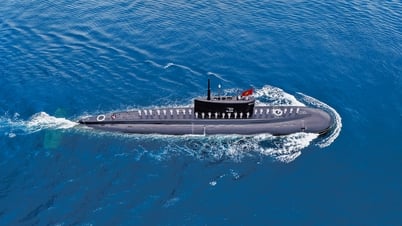










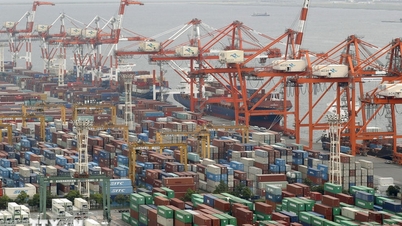













![[Photo] Worshiping the Tuyet Son statue - a nearly 400-year-old treasure at Keo Pagoda](/_next/image?url=https%3A%2F%2Fvphoto.vietnam.vn%2Fthumb%2F1200x675%2Fvietnam%2Fresource%2FIMAGE%2F2025%2F12%2F02%2F1764679323086_ndo_br_tempimageomw0hi-4884-jpg.webp&w=3840&q=75)

























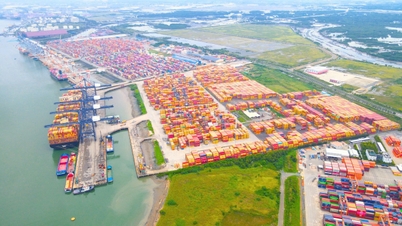





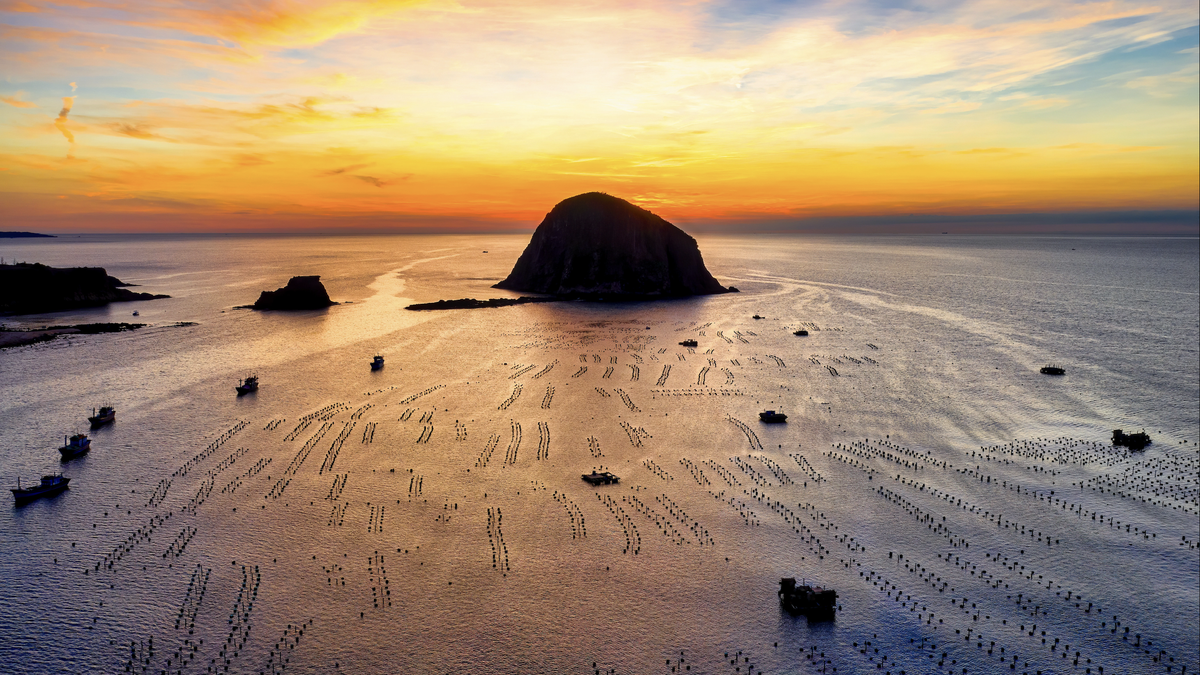








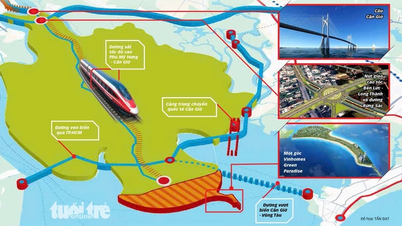
































Comment (0)